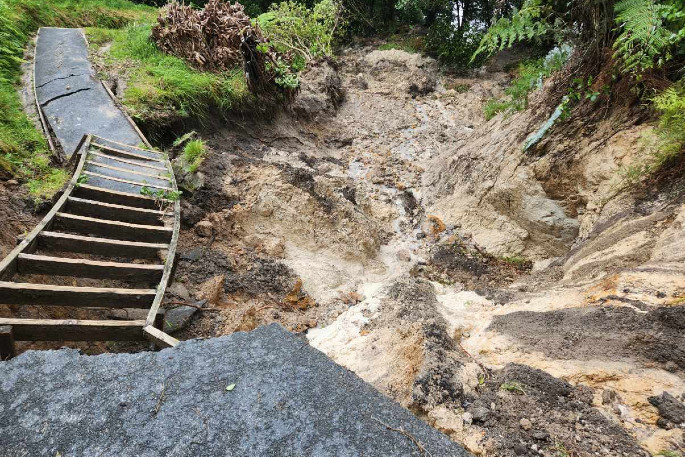This Content Is Only For Subscribers
After nearly two years of closure due to severe weather events, the iconic Cathedral Cove walking track on the Coromandel Peninsula has officially reopened.
Since February 2023, when storms rendered the track unsafe, visitors could only access the beach by boat. Now, thanks to extensive repair efforts funded by $1.4 million from the International Visitor Levy, the track is ready to welcome walkers for the 2024/25 summer season.
Department of Conservation operations director Tinaka Mearns says the restoration project involved navigating multiple issues to ensure a safe and sustainable outcome.
“We worked through a complex set of issues to enable a work programme to be put in place. These included land management responsibilities (land stability and rockfall challenges, health and safety considerations and management of visitor pressure) and treaty settlement requirements,” she says.
The work programme addressed several critical aspects to restore access, including the installation of a temporary stair structure and rerouting the damaged track to reconnect the reserve to the beach. Additional measures included tree removal to mitigate hazards, the installation of a four-pan toilet block, and upgrades to the Grange Road carpark to support summer traffic management.
“Next steps included acquiring consents, fulfilling heritage and statutory requirements, securing contractors, getting Geotech analysis, completing the track design, and undertaking closure security measures,” says Tinaka.
These efforts aim to not only restore access but also ensure a high-quality visitor experience through dedicated rangers and ongoing maintenance. The return of walking access comes at a critical time for the region, which has traditionally drawn an estimated 250,000 walkers annually, with Kiwis accounting for approximately 20-25 per cent of that number.
The economic benefits of the walking track to Cathedral Cove reopening is significant.
“Visitors to the area are predicted to bring an estimated $12 million into the region annually, says Tinaka, highlighting the importance of the site to local tourism and the economy.
“This works out to roughly 6.9 per cent of Thames-Coromandel’s total GDP.”



